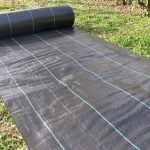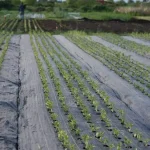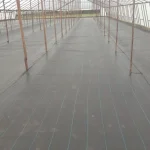Agrotextile in Gardening and Agriculture
Ground cover is a type of material used in gardens, fields, or flower-growing areas to support plant cultivation. It is laid on top of the soil to facilitate various aspects of plant growth. The purposes of using ground cover vary and include the following:
-
Weed Prevention:
Ground cover helps prevent the growth of unwanted weeds. These weeds compete with plants for nutrients, water, and sunlight, which can hinder healthy plant development. By acting as a barrier, the ground cover blocks weeds from emerging from the soil, thus reducing competition and promoting better plant growth. -
Reducing Soil Erosion:
Ground cover helps minimize soil erosion caused by rainwater and wind. It protects the soil surface, preventing the loss of topsoil, which is essential for plant nutrition. This contributes to the preservation of the fertile layer of the soil. -
Improving Water Retention:
Ground cover increases the soil’s ability to retain moisture by reducing water evaporation. This ensures that plants have access to water for a longer period, increasing their drought resistance and reducing the need for frequent irrigation. -
Blocking Harmful Insects:
Ground cover acts as a physical barrier against harmful insects, preventing them from reaching the plants. By covering the soil beneath the plants, it makes it harder for pests to move toward and damage the crops.
In summary, ground cover provides several benefits in the plant-growing process, including effective weed control, reduced soil erosion, water conservation, and pest prevention. Additionally, it helps maintain a cleaner and more organized growing environment, which can contribute to healthier and more productive plants.




